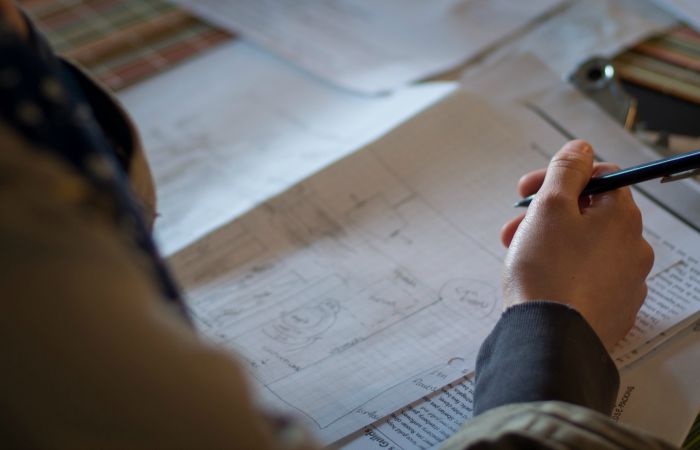The Challenge: Many people resent their weaknesses and spend much of their lives in shame.
The Science: Research shows that with every strength is a weakness and with every weakness there are strengths.
The Solution: Embrace your struggles because the other side of it is a strength.
Most of us feel ashamed of what we believe are our weaknesses – for example, we may feel that we are bad spellers or that we have bad social skills. We feel that these weaknesses are major stumbling blocks for us. However, research is showing us that we are wrong and that, in fact, these “weaknesses” are actually indicators of talent.
Say hello to Neurodiversity, the new civil rights movement on the block. It is a movement that asserts that we should celebrate different cognitive processing styles such as Dyslexia, Asperger, and ADHD ( among others) and not simply pathologize them. Neurodiversity makes the claim that, along with the well-known developmental difficulties, there are cognitive strengths. Essentially, cognitive strengths and weaknesses represent two different sides of the same neurobiological coin. As Harvey Blume (1998) penned in his seminal Atlantic article on the topic:
“Neurodiversity may be every bit as crucial for the human race as biodiversity is for life in general. Who can say what form of wiring will prove best at any given moment? Cybernetics and computer culture, for example, may favor a somewhat autistic cast of mind.”
The most important part of this research on neurodiversity is how it acts as an invitation to all of us to embrace, leverage, and love our natural inefficiencies and difficulties; every strength has its shadow, and every shadow has its silver lining. This movement summons us all to explore our relationship with difference, challenging us to reflect upon differences with awe and reverence for the unknown instead of instinctive judgment. And finally, it reminds us that really, our deepest strength lies in becoming more of who we already are and not trying to be someone that we are not.
One of my favorite theorists, doing some of the most interesting neurobiological research on neurodiversity, is Dr. Manuel Casanova, who asserts that Dyslexia and Asperger’s are on two opposite sides of the same developmental trajectory. Dr. Casanova studies the cortical connectivity, cortical complexity, and the mini-column width found within the brains of dyslexics and individuals on the spectrum. With dyslexics, you see a top-down- processing style with a holistic-oriented gestalt processing bias. They have strengths in big-picture processing at the expense of small detail-oriented processing. A cognitive style that biases the “forest “ at the expense of the individual “trees.” Dyslexics are good synthesizers.
On the other hand, on the opposite end of Cassinova’s Spectrum is the Asperger processing style, which tends to excel with detail-oriented tasks and struggle with big-picture gestalt processing, the reverse of the dyslexic strengths, with a bias for “trees” or details. These individuals are bottom-up – processors. They have a local processing style and are great analyzers. Despite the fact that Dyslexia and Asperger’s are the outliers of Cassinova’s bell curve, all of us are somewhere on that spectrum, with the majority of us in the middle.
The Eidies, in their book The Dyslexic Advantage, take the argument of cognitive advantages of the dyslexic processing style one step further. In their groundbreaking work, they synthesize extensive cognitive science research classifying the strengths found within the dyslexic population into four main categories, which come together to form the acronym M.I.N.D.
These MIND strengths stand for:
M- MATERIAL REASONING: Or visual spatial skills. M-Strengths are the ability to reason about the position, form, and movement of objects in three-dimensional space. Think: Designers, architects, landscapers
I – INTERDISCIPLINARY THINKING: The ability to spot, understand, and reason about connections and relationships (e.g., analogies, metaphors, systems, patterns).
N- NARRATIVE INTELLIGENCE: The ability to reason using fragments of memory formed from past personal experience (i.e., using cases, examples, and simulations rather than abstract reasoning from principles).
D- DYNAMIC REASONING: The ability to accurately predict using patterns derived through experience in the future or the unwitnessed past. Think
We see a similar “cognitive trade-off model” with ADHD-like symptoms. Bonnie Cramond, creativity researcher and professor at The University of Georgia noted that many of the same traits of creativity overlap to a substantial degree with behavioral descriptions of Attention Deficit Hyperactive Disorder (ADHD)-including higher levels of spontaneous idea generation, mind wandering, daydreaming, sensation seeking, energy, and impulsivity.
As Scott Barry Kaufman author of Ungifted: Intelligence Redefined notes:
“People with attention-deficit/ hyperactivity disorder (ADHD) also tend to show increased mind wandering and a lack of default network suppression with increasing task difficulty…At the same time, people with ADHD tend to score higher on tests of divergent thinking, creative style, and creative achievement.”
Recently, I interviewed creativity researcher Darya Zabelina for my Podcast, The Dyslexia Quest ( episode not published- yet!). Her fascinating research indicated that individuals with lower sensory gating or “leaky attention” were correlated with higher levels of real-world creative success. Research such as Darya’s encourages us to take a second look at behavior, which at first blush may indicate lower levels of cognitive performance, i.e., an inability to filter out “unnecessary stimuli,” but in fact, on closer glance is actually another indication of our cognitive trade-off paradigm.
The research on dyslexia, Asperger’s, and ADHD also acts as a metaphor. They are cognitive processing extremes that mirror a deeper truth inside of all of us. Every talent, strength, and ability has its Achilles heel. And every struggle, difficulty, and inability comes with its own strength. Our strengths and abilities are fundamentally interconnected with our struggles, and our struggles, ah, that’s simply the other side of our strengths. So here you have it, an invitation to embrace the parts of you that cast you off to the tail ends of the normal distribution curve.



